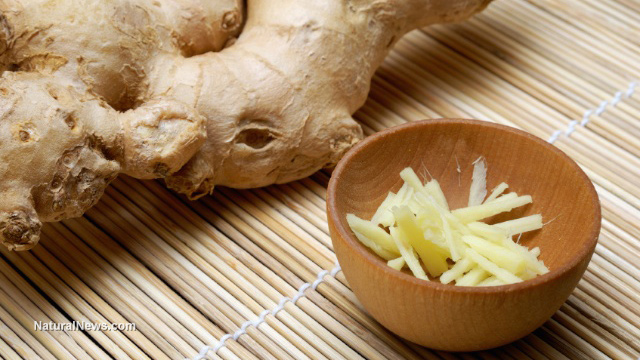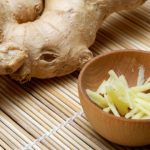
Here’s an easy guide to growing your own ginger at home
Tuesday, October 09, 2018 by Zoey Sky
http://www.starvation.news/2018-10-09-heres-an-easy-guide-to-growing-your-own-ginger-at-home.html

Ginger, which has a unique sweet, warm, and zesty flavor profile, is a popular superfood that offers various health benefits. It is even used in home remedies for indigestion or nausea. Follow these steps if you want to try growing ginger in your backyard.
- Find some ginger root – When buying ginger root, find a piece that’s just about the size of your thumb, but with some several bumpy nodules at the tips. These are ginger buds. Choose ginger root with plump chunks instead of withered buds. The skin on delicate ginger buds must be thinner and lighter-colored. You can’t grow conventional ginger in your home garden because this is irradiated and treated to prevent it from sprouting while on display at the supermarket. Buy organic ginger instead.
- Make the ginger root sprout – This step may require some patience. To hasten the sprouting process, make a terrarium for the ginger root using a takeout container with a clear lid. Get a container that’s several inches bigger than the seed and poke some drainage holes in the bottom. Add an inch or two of potting soil below the seed and add about half an inch of soil above the seed. Once the seed is watered, replace the lid but don’t seal it. Keep the soil at about 70 F and moist to the touch. Water it only when the soil dries. A sprout will crop up after six to eight weeks.
- Replant the ginger in a large container – Ginger requires a generous amount of feed and lots of watering before it can grow, so transfer the ginger to a bigger pot. With enough space to grow, a ginger that’s about the size of your thumb can easily fill a two-gallon pot after just six months. Your container must have good drainage holes and a deep saucer. Add well-draining, fertile soil with plenty of coir, or long fiber that’s a byproduct of coconut processing. Take the pre-sprouted rhizome (the underground part of the stem) and gently place it on top of four inches of soil, then bury everything but the sprout tip. Set the pot near a warm, sunny window or in a sunny, sheltered spot outdoors where the temperature is at least 60 to 90 F.
- Hill the soil – Ginger rhizomes will burst through the soil, and the sun will turn them green. Commercial growers increase their yields by watering ginger regularly and hilling the rhizomes once a month. When growing ginger at home, sprinkle it weekly with organic plant food. Once a month, add several inches of rich compost into your pot so the rhizome is protected from direct sunlight. (Related: The science behind the healing effects of ginger.)
- Harvest – To harvest ginger, grasp the greens at their base (right where they emerge from the soil), then lift the entire rhizome. Cut off a chunk of the rhizome, then return the rest of the plant back in the pot. Add more potting soil or compost, water the ginger heavily, and monitor the plant closely. Since ginger is a fragile transplant, you must protect it from direct sunlight and temperature changes for several days as it recovers.
Compared to cured ginger sold in U.S. grocery stores, baby ginger has a mild flavor. Its skin is so thin you won’t even need to peel it. You can sauté baby ginger with vegetables or turn it into a comforting tea with some honey and lemon.
Fast facts about ginger
Ginger is full of nutrients and bioactive compounds that are good for the brain and the body.
- Ginger belongs to the Zingiberaceae family, and it is closely related to cardamom, galangal, and turmeric.
- The rhizome of the plant is the part often used as a spice. It is often called ginger root, or ginger.
- Ginger can help ease digestion, minimize nausea, and treat the flu and common cold.
- Ginger has gingerol, a substance with potent medicinal properties. The main bioactive compound in ginger, gingerol is responsible for most of the spice’s medicinal properties. It has powerful anti-inflammatory and antioxidant effects.
You can read more articles with tips on how to ginger and other spices at HomeGardeningNews.com.
Sources include:
Tagged Under: Tags: food supply, fresh produce, gardening, ginger, gingerol, goodfood, home garden, home gardening, Homestead, homesteading, how to, off grid, organics, preparedness, prepper, prepping, root crops, superfoods, survival, sustainable living, urban gardening, vegetables





